Targeted Cancer Therapies
What are Targeted Cancer Therapies?
Targeted cancer therapies use drugs to more precisely identify and attack cancer cells, based on a person’s genes, as compared to traditional cancer treatments. As such, targeted cancer therapies are sometimes called “molecularly targeted drugs” or “molecularly targeted therapies” and allow for a more precision medicine approach.
In addition to being molecularly-focused, targeted therapies are often cytostatic (which means they block tumor cell proliferation), whereas standard chemotherapy agents are cytotoxic (which means they kill tumor cells). Therefore, many targeted drugs go after the mechanisms that make cancer cells different than normal cells and leave the healthy cells alone.
Support Breakthroughs in Targeted Cancer Therapies
Cancer Research and Beyond.
Related Content
Research Update: A New Hope for Inflammatory Lung Diseases
A new treatment may soon bring relief to people suffering from pulmonary sarcoidosis, a serious lung disease with few good treatment options. The discovery comes from research led by Dr. Paul Schimmel of Scripps Research, a longtime scientist supported by the National Foundation for Cancer Research (NFCR). The team’s findings were recently published in Science Translational Medicine. What is Pulmonary Sarcoidosis? Sarcoidosis is a type of interstitial lung disease (ILD) where the immune system goes into overdrive, forming clusters of inflammatory cells—called granulomas—in the lungs. These can cause scarring and breathing problems. Current treatments mainly rely on steroids, which can have serious side effects like weight gain, bone loss, and a higher risk of infections. Is sarcoidosis cancer? It is not considered cancer but sometimes is mistaken as such. What Did Paul Schimmel & Team Discover? Dr. Schimmel’s team created a new therapy called efzofitimod, based on a natural protein found in lung tissue. This engineered version is designed to calm the immune system in a more targeted way. Instead of shutting down the whole immune system like steroids do, efzofitimod focuses on specific immune cells that cause inflammation. Efzofitimod works by attaching to a receptor called neuropilin-2 (NRP2), found on certain immune cells that become overactive in lung disease. This helps reduce inflammation and lung damage while keeping the rest of the immune system working normally. In lab and animal studies, efzofitimod reduced inflammation and scarring in several types of ILD. In a small clinical trial, patients with sarcoidosis were able to lower their steroid doses while keeping their lung function stable and reducing inflammatory markers. “This isn’t a drug that shuts down the immune system,” said Dr. Leslie Nangle, co-lead author of the study. “It guides the immune response in a gentler, more natural way.” While the study focused on sarcoidosis, scientists believe efzofitimod could also help people with other inflammatory lung diseases. It may even lead to a new class of more targeted immune therapies. This research was partly supported by NFCR, showing how cancer research can lead to breakthroughs in other diseases, too. Make a Gift Today to Support Breakthroughs in Cancer Research>>> About Paul Schimmel Dr. Paul Schimmel, a distinguished biophysical chemist, has been collaborating with the National Foundation for Cancer Research (NFCR) since 1994. His research focuses on aminoacyl-tRNA synthetases (aaRS), enzymes crucial for gene expression. Supported by NFCR funding, Dr. Schimmel and his collaborator, Dr. Xiang-Lei Yang, have uncovered that certain aaRS enzymes are linked to diseases such as chronic and acute inflammation, neuropathy, and cancer progression. Notably, their work on SerRS has demonstrated its potential as an anti-tumor and anti-metastasis agent, offering promising avenues for cancer therapy. Sign-up to Stay Informed About Cancer Research Breakthroughs with NFCR!
The Future of Your Health Begins with Precision Medicine
“One-Size-DOES NOT-Fit-All” ‘You wouldn’t wear just any pair of glasses – your prescription is tailored to your vision’1. This statement alludes to and embraces the importance of an individual’s unique characteristics: genetics, health history, lifestyle, diet, or geographic location. Just as you would expect your doctor to match a blood transfusion to a blood type, wouldn’t you want your health care tailored uniquely to you in other ways if that were possible? The answer is likely YES. This is the foundation of precision medicine, a customized treatment plan based on an individual’s unique characteristics and developed using advanced technology. How Does Precision Medicine Use Advanced Technology to Match a Cancer Treatment to a Patient? While all humans are alike, variations in DNA blueprints are what differentiate one from another, and in certain individuals those variations may be the root cause of some illnesses, including cancer. Modern computational technology has made it possible for scientists to analyze the gigantic sets of codes in our DNA that affect human health and to identify tiny variations in that code. This is Precision Medicine. How Does Targeted Therapy Rely on Precision Medicine? Because cancer may be considered a disease of genomics, or one’s DNA, we now have the technology and knowledge to pinpoint where the change in genomics occurred and caused certain cancers. This helps us to design cancer treatments specifically targeting those abnormalities in cancer cells without harming adjacent normal cells. This is Targeted Therapy. As an example, scientists have learned the genomic alteration related to lung cancer patients and are exploring how using targeted therapy shapes the way we treat lung cancer. One of the genes that is abnormal and might cause cancer is MET (c-MET; MET-EXON 14)2. What Is MET and How is it Related to Cancer? c-MET is a protein (MET gene) we all have in our body that plays a role in normal cell growth. Sometimes, for an unknown reason, MET gets altered and can contribute to cancer. Recent research suggests that these alterations in the MET gene (e.g., Exon 14 skipping, amplification or fusion) are often found in patients with lung cancer and other types of solid tumor cancers. Therefore, inhibiting abnormal MET pathways is considered an important focus area for developing new targeted therapies. A Clinical Trial Targeting MET The SPARTA Clinical Trial is exploring an investigational drug (APL-101) that targets tumor cells expressing one or more MET genetic abnormalities in hopes to cause tumor cell death and shrink or halt cancer cell growth in various advanced cancer types. APL-101 has been studied in participants with advanced solid tumors (including glioblastoma; gastrointestinal cancers; lung cancer) in a Phase 1/2 global clinical trial enrolling in 14 countries around the world3. To be eligible for the SPARTA Study, patients must qualify for the prerequisite criteria including a diagnosis with advanced tumors and have one (or more) of the following alterations in their MET gene: MET Exon 14 skipping mutation, MET Amplification, MET-gene Fusions. To learn more about investigational options for patients with MET aberrated cancers, visit: https://spartacancertrial.com/. You should consult your doctor to discuss the possible benefits and ways [...]
New Treatment & Renewed Hope for Triple-negative Breast Cancer Patients
Triple-negative breast cancer (TNBC) is more aggressive and has a worse prognosis than other breast cancers. Triple-negative breast cancer (TNBC) accounts for about 15-20% of all breast cancers. The word "triple-negative" means laboratory test results for the three treatment targets on cancer cells, namely the estrogen receptors, progesterone receptors, and HER2 proteins, are all negative. TNBC is a more aggressive type of cancer that grows and spreads faster. As the triple-negative cancer cells won't respond well to most therapies, including hormone therapy and targeted therapy, doctors have very few treatment options to control the cancer progress. As a result, TNBC patients tend to spread faster and have a higher recurrence rate and worse prognosis. A New Treatment Option is Now Available On March 11, 2022, the Food and Drug Administration (FDA) approved a drug called Olaparib to treat HER2-negative, high-risk early breast cancer. Data from a phase 3 clinical trial of 1,836 patients, of which about 82% had the triple-negative disease, led to the approval. The clinical trial results demonstrated that Olaparib reduced the risk of death by 32%, compared to the placebo. The recent FDA approval brings new hopes to patients with early triple-negative breast cancer since many currently available therapies couldn't effectively control the progression of their cancers. Patients have to do a blood test before receiving Olaparib treatment. Olaparib is a targeted therapy restricted to patients whose breast cancers have specific gene mutations called germline BRCA1/2 mutations. To be eligible for the treatment, patients must have an FDA-approved blood test, or a companion diagnostic test, to confirm the existence of the germline BRCA1/2 mutations before their treatment. Patients without the confirmed mutations couldn't receive the Olaparib treatment as they won't have the treatment benefits from the drug and might experience the drug's harsher side effects. Research Performed Three Decades Ago Enhances Targeted Therapy Today In 1990, Dr. Mary-Claire King, an assistant professor at UC Berkeley, was the first scientist to demonstrate that a gene on chromosome 17q21, named BRCA1 one year later, was responsible for hereditary early-onset breast cancers. In 1994, Drs. Michael Stratton and Richard Wooster in the UK identified BRCA2. Three decades later, mutations in the BRCA1 and BRCA2 genes become a critical indication to enhance the targeted therapy with Olaparib. It tells us that converting research discoveries to patient-impacting benefits takes pretty long. We need to continue to support basic research today so that new therapies can continue to save patients' lives in the future. To recognize Dr. Mary-Claire King's fundamental contribution to the genetic understanding of cancer, the National Foundation for Cancer Research (NFCR) awarded Dr. Mary-Claire King the Szent-Györgyi Prize for Progress in Cancer Research in 2016 in Washington DC. Learn more about this award and Dr. Mary-Claire King's research here. Olaparib offers survival benefits and brings new hopes to patients with early triple-negative breast cancer. As the patients have to be selected by an FDA-approved blood test before the treatment, patients should work with their doctors to determine whether they are eligible for the treatment before receiving the treatment. Sign up here to receive our monthly e-newsletter featuring healthy living information, stories of [...]




















